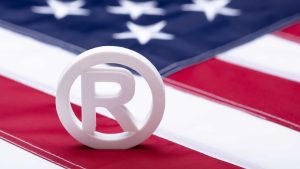![]()
Trademark Restrictions in India
In the context of a business or a product, the phrase “trademark” refers to images consisting of officially registered or widely recognized words. In today’s era of intensified global rivalry, the need to distinguish our goods or services has increased. This competition promotes the use of a structured approach in the process of identifying products. Historical records suggest that circa 3000 years ago, Indian artists were the first to practice the tradition of adding their signatures to works of art, even though the concept of trademarks may have been new to the Indian population then. The growing interconnection and globalization have led to an amplified significance of trademark regulation in India.
The Trade Marks Act of 1940, which was the first rule about trademarks, was a lot like the Trade Marks Act of 1938 in the UK. It became increasingly clear that the Act wasn’t enough to meet society’s changing needs. In 1999, the Trade Marks Act replaced the Trade and Merchandise Marks Act of 1958. This law, in line with TRIPS rules, sets up a structured way for goods and services to register brands. This feature facilitates the exclusive association of a product with its manufacturer and offers protection against trademark infringement.
Throughout history, common law principles have guided the administration of trademark in India.
Since the legislation’s inception, Section 2(1) (zb) of the Trademarks Act of 1999 has stipulated the subsequent definition of a trademark: A trademark, defined as a graphical depiction, functions the purpose of distinguishing the goods or services of a specific entity from those of others. This includes the packaging, design, and colour combinations of products.
(i) Chapter XII (except Section 107) it refers to a legitimately registered trademark or a symbol employed in commerce to symbolize a connection between a provider of goods or services and an individual with the authority to utilize the mark as its proprietor.
(ii) Additional stipulations of this legislation include a trademark that is employed or designed to be employed in connection with products or services to indicate a trade connection between said products or services and an individual who possesses the authority to utilize the trademark, either as the owner or through authorized use. This also applies to collective marks and certification marks, regardless of whether they disclose the identity of the associated entity.
Certification mark
This symbol primarily distinguishes the source, material, quality, and attributes of goods and services a manufacturer or dealer provides from those of competitors. It also helps evaluate the value of labour involved in producing goods or services.
Collective mark
Collective marks distinguish the individuals belonging to a collective group, such as a cooperative organization or an association.
What Cannot be a Trademark in India?
In sections 9 and 11, the Trade Marks Act of 1999 delineates the parameters that must be met to deny a trademark application in India. In establishing exhaustive guidelines for accepting or denying trademark applications, these sections specify both absolute and relative grounds for denial.
Absolute Grounds for Refusal
1. Devoid of Distinctive Nature
The Act underlines the requirement for trademarks to possess a distinctive character. Section 9(1)(b) prohibits the registration of descriptive trademarks unless they acquire distinctiveness through use. This criterion has been broadly interpreted in Indian law, denying registration to marks lacking inherent distinctiveness.
2. Names/Surnames
Names or surnames without a distinctive character are generally refused trademark status. Notably, the case of Prathiba M. Singh v Singh and Associates established that common surnames like “Singh” cannot be monopolized.
3. Numerical Marks
Numbers, by themselves, may not inherently qualify for trademark status as they might lack distinctiveness. In the Radico Khaitan Ltd v. Carlsberg India Pvt Ltd case, the Delhi High Court ruled that numerals inherently lack distinctiveness.
4. Geographical Locations
The Act bars the use of geographical locations as trademarks. The “Simla” case (Imperial Tobacco Company of India Ltd v. Registrar of Trademarks) clarified that marks indicating geographic locations are ineligible for registration.
5. Colour Marks
While the Act doesn’t explicitly refuse colour usage, Indian courts and registries often discourage colour trademarks due to concerns over depleting available stock and possibly inundating courts with colour-related cases.
6. Sound Marks
Musical notations can be accepted as trademarks, but ordinary sounds, like a dog’s bark, are not considered distinctive enough for trademark registration.
7. Smell Marks
Smells have not been registered as trademarks in India due to difficulty discerning and differentiating between various scents.
8. Characteristics of the goods or services
Any indication that describes the kind, quality, quantity, intended purpose, values, geographical origin, time of production, or other characteristics of goods or services cannot be utilized as a trademark. In the case of ELGI Ultra Industries Limited v The Assistant Registrar of Trade Marks, MANU/IC/0062/2008, the Intellectual Property Appellate Board [IPAB] determined that terms like “ultra” and “perfect” are excessively descriptive and commendatory, making them unsuitable as trademarks.
9. Customary
Trademarks comprising indications or marks entrenched in a common language or established trade practices cannot be registered. A prime illustration is Otis’ trademark “Escalator” for moving staircases, which transformed into a generic term. Consequently, the Trademark Office deemed Otis ineligible to use its trademark as it had become a customary term for moving stairs.
10. Deceitful
A trademark must not mislead the public. For instance, if a company manufactures biscuits under the name Parle-J, it could infringe on the rights of Parle-G if it causes significant confusion among consumers due to its deceptive similarity.
11. Hurtful to religious sentiments
If marks offend religious sentiments, they will not qualify as trademarks.
As per Section 9(2)(b), a trademark offensive to the religious sentiments of a section of Indian citizens cannot be registered. For instance, using the term ‘Ganesh’ (representing a deity) for ‘Bidis’ was disallowed from registration. It’s crucial to note that the names of deities and religious texts cannot be monopolized. In Lal Babu Priyadarshi v. Amrit Pal Singh (2015), the Supreme Court ruled against trademarking such names for selling goods, as it may offend sensibilities. This defence counters the ‘common to trade’ principle, citing acquired distinctiveness and suggesting that religious symbols as names or trademarks for “religious items” like incense sticks might not generally offend religious sensibilities.
12. Scandalous Matter
If a word is intended for trademarking, it must not possess any scandalous or obscene connotations. Section 9(2)(c) stipulates that a trademark should not contradict moral principles. Obscene marks could erode societal values, and thus, for registration, a mark should be socially acceptable without containing any matter likely to cause distaste to a significant part of the public. In S. Rangarajan v. P. Jagjivan Ram, the court emphasized assessing obscenity from an ordinary person’s perspective rather than a “hypersensitive man.” Similarly, in London Rubber Co. Ltd v. Durex Products, the Supreme Court upheld the registration of “Durex” for contraceptives, deeming it non-obscene. The trademark “FCUK”, owned by French Connection Limited, faced challenges in the UK for conflicting with accepted moral principles, yet it’s registered across multiple classes, including 3, 9, 14, and 18 in India.
13. Prohibited under the Emblems and Names (prevention of improper use) Act, 1950
If the mentioned Act forbids a mark’s usage, it cannot be employed as a trademark.
Section 9(2)(d) prohibits the registration of marks forbidden under the specified Act. Notably, the Indian National Flag, Ashok Chakra, and emblems of global entities like the United Nations Organization or the World Health Organization cannot function as trademarks. In a “Chhatrapati Shivaji Biddii case,” the Emblems Act rendered the trade marks illegal. Moreover, while UNO stands unregistered due to legal constraints, the outline of the Indian map isn’t expressly prohibited under the Emblems Act, as noted in the case of M/S Jindal Industries Private Limited v. The Registrar of Trade Mark.
Moving to Section 9(3), marks purely comprising the shape of goods due to their nature, those necessitated by technical purposes, or those lending significant value to the goods are ineligible for trademark registration. For instance, a shape vital for a product’s functionality, like the shaver’s design in Koninklijke Philips Electronics NV v. Remington Consumer Products Ltd, doesn’t qualify as a valid trademark. Similarly, the familiar Coca-Cola bottle shape, registered as a trademark, became a point of contention in The Coca-Cola Company and Ors. Vs. Narsing Rao and Ors.
- Relative grounds for refusal of registration – Section 11 of the Act: While absolute grounds focus on the trademark itself, relative grounds in Section 11 assess how a mark compares against existing prior trademarks in the register.
14. Shape of goods
Section 9(3) of the Trade Marks Act, 1999 specifies that a mark cannot be registered as a trade mark if it solely comprises:
(a) The shape derived from the inherent nature of the goods;
(b) The shape necessary to achieve a technical result;
(c) The shape that significantly contributes to the value of the goods.
For instance, the specific shape of vanilla ice cream, naturally stemming from its product characteristics, wasn’t eligible for trademark registration.
15. Identical/ similar products
A mark resembling an earlier one can’t be employed as a trademark for a different product. For instance, if TATA Motors is already a trademark, it can’t be reassigned for another product to avoid unfair advantage.
Relative grounds refer to the similarity between a trademark and an earlier one, particularly concerning goods or services, which might cause public confusion regarding their origin. In India, the first-to-use principle safeguards unregistered trademarks that have been used previously. In contrast, first-to-file systems like China grant rights to the first registrant regardless of prior use by others. Section 34 of the Indian Trade Marks Act, 1999, ensures prior user rights, protecting a person who used a similar mark before the later trademark’s first use or registration date.
An essential defence against these provisions is the ‘Anti-Dissection Rule,’ advocating the comparison of marks as a whole. Section 17 of the Act upholds the proprietor’s exclusive right over the entire mark if it contains multiple elements. For instance, in Cadila Health Care Limited v. Cadila Pharma Limited, the focus was on whether the total impression of the trademark might confuse consumers accustomed to existing marks.
In the case of Corn Products Refining Co. v. Shangrila Food Products Ltd., the court acknowledged the reputation of the appellant’s trademark. It refused registration to the respondent’s mark ‘GLUVITA’ as it could cause confusion and deception among consumers.
An argument favouring registration of similar trademarks emphasizes that a trademark owner cannot monopolize an entire class of goods, as noted in Vishnudas Trading as Vishnudas v. The Vazir Sultan Tobacco Ltd and M/S. Nandhini Deluxe v. Karnataka Cooperative Milk Producers Federation Ltd. The principle suggests that identical or similar trademarks can be registered for different goods within the same class, extending the proprietor’s monopoly only to the specific goods produced within that class.
16. Contrary to law
Unregistered trademarks protected by passing-off laws cannot be utilized by others as trademarks.
Registrar
The registrar can refuse the registration of the appellant’s trademark if deemed necessary.
In the case of Geep Flashlight Industries Ltd. vs. Registrar of Trade Mark, AIR 1972 Delhi 179, despite the appellant meeting the conditions specified in the Act, the trademark registration wasn’t guaranteed as a matter of right.





